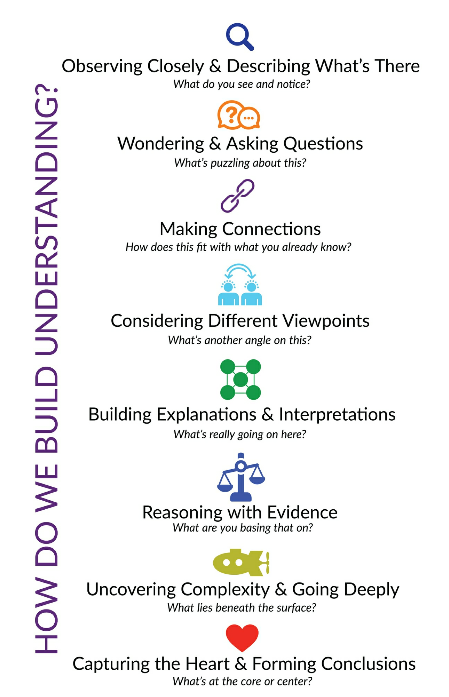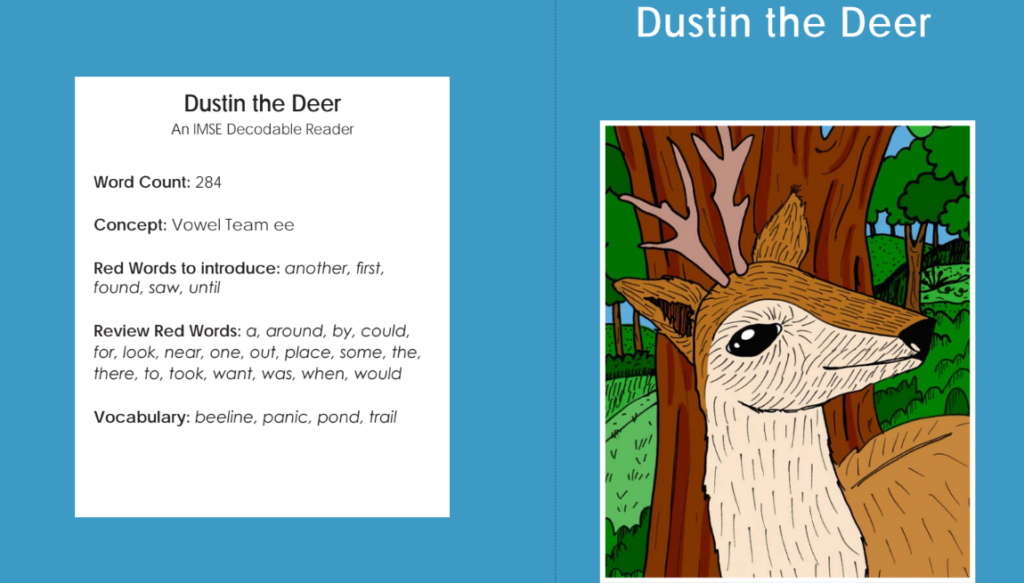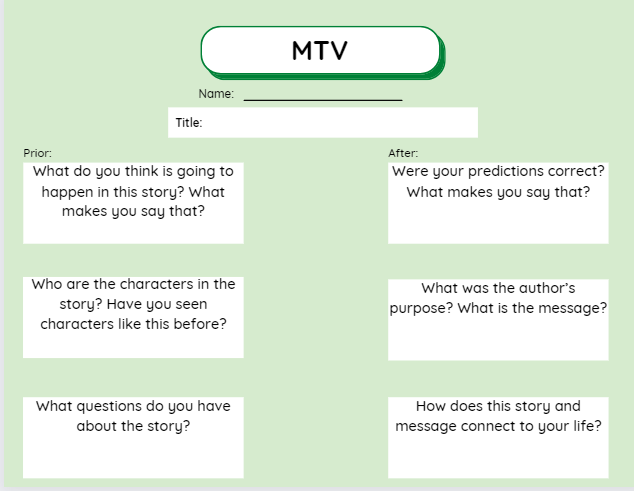Main points of MTV:

- On page 29, there is a visual organizer illustrating how we build understanding. This begins with initial observations which leads to generating questions about what is seen, and linking this to prior knowledge. After this, one begins to shape their own perspective and listen to other views. Lastly, one is able to think deeply about the topic and form their own conclusions. This was helpful when thinking about the process of MTV, and the steps to encourage my students to critically think about new information.
- The three part routine of engagement on pages 9-11 involves interacting with others, exploring new ideas, and in action. It emphasizes that learning is a social process where sharing thoughts and states that the optimal learning environment is giving students space to share their ideas. Memorization and repeating information does not indicate true understanding. Comprehension requires active engagement for deep understanding. The reading also highlights that students should not be blamed for a student’s lack of engagement, and that teachers are more successful when they believe in every student’s capability to learn. The example from the reading was about a University professor who adopted the MTV approach rather than call and response.. She found that this energized the classroom with ideas and perspectives, rather than having students passively listen. Students wondered why other professors were not implementing this in their classroom because they found it so beneficial.
- I enjoyed reading about changing the role of teachers and students on pages 7-9. MTV challenges the traditional roles of teachers as deliverers and students as passive recipients. Instead, it presents a new idea of teachers as orchestrators who cultivate a positive culture and foster connections while students become the creators and directors of their own learning. This gives each student the opportunity to be successful, eliminating the traditional labels of “good” and “bad” students. I also like that MTV does not suggest that the teacher abandons the curriculum or reject assessments. Rather, this acknowledges that tests are a stop on the journey, but should not be the end. The focus is on retaining knowledge and equipping students with lifelong learning skill
MTV has influenced my teaching by prompting me to reflect on 3 key aspects: three-part engagement, changing the role of student/teacher, and the process of building understanding. The three-part engagement reinforced my belief that students learn through socialization and by expanding upon their thoughts. I would like to set aside more time for this collaboration in the classroom. Changing the role of student/teacher can be overwhelming, but I liked the reading’s stance that this transformation can happen gradually and through consistent modeling and clear expectations. The reading emphasized the continued importance of tests and how this is still an important part of learning. This perspective highlights that knowledge must be built upon, and to incorporate prior knowledge into current learning. This changed my perspective on tests, and I want to shift my focus to building upon their prior knowledge. Lastly, the chart on page 29 provided a helpful framework for how we build understanding. I want to keep a copy of this in my classroom for reference, and continue to build upon the prior knowledge and encourage the students to expand upon their perspective.
MTV Experience

- Describe the MTV strategy you used with your learners
- Content: Reading Comprehension
- Strategy: Exit Tickets/Peeling the Fruit
- Lesson: Read Dustin the Deer and discuss the MTV pre and post questions. I tutor my neighbors who are twins in second grade.
- Student responses before the story:
- What is going to happen in the story? What makes you say that?
- Initially, they told me that they think the story is about a deer playing in the forest. When I asked them what made them say that, they were able to expand that They see a picture of a deer surrounded by trees and he is smiling. They said that they smile when they play which is why they thought that.
- Who is the character in the story? Have you seen something similar before?
- They identified the deer as the character, but then dug deeper to connect this to prior knowledge. They said that the deer also reminded them of Bambi.
- What questions do you have about the story?
- Who is he playing with?
- Will this story be similar to Bambi?
- Is he happy about something else?
- What is going to happen in the story? What makes you say that?
- Student responses after the story:
- Were your predictions correct? What makes you say that?
- The students both answered, “no” to their predictions being incorrect. “When asked what makes you say that” they were able to say that he was looking for food rather than playing.
- What was the author’s purpose?
- When you are upset about something, you should leave rather than yelling.
- How does this connect to your life
- (This was actually my favorite response!) In the question above, the students were just identifying the moral of the story, but here they were able to connect it to their lives and form their own perspective. They said that sometimes they get mad at each other when they are using their toy, or being mean. Sometimes, it is important to walk away, but sometimes it is important to work it out.
- Were your predictions correct? What makes you say that?
- Success: Each student engaged in a deeper analysis of our story, and showed their thinking through their responses. The question, “What makes you say that?” was more effective in seeing their thoughts. This question gave them the opportunity to expand their answers and reflect upon the material further. Prior to this, I would just ask the students, “Why” which often led to them changing their answers or brief responses such as, “because that is what I think.”
- Challenge: Although I liked trying this in a small setting, I would love to see this implemented in a whole group setting. I think that if students were given opportunities to share their responses with more people, that they would develop more responses and ideas. I would like to present these questions as a gallery walk, so the students were able to move and collaborate. Also, this initial process was very time consuming, but I am excited to continue the routine because it was beneficial. I also had anticipated the post questions as acting more of an exit ticket completed independently. However, I thought the discussions were beneficial for all of us, which is why I changed from an exit ticket to more of peeling the fruit strategy.
- Next time: One aspect that I would like to change is the format of the question sheet. I printed the questions and laminated it for reuse, and the students wrote their responses on a separate sheet of paper. However, I think it would have been more beneficial to have the questions on the response sheet as well so they could refer to it and highlight certain parts. Also, I would like to try this with a story they are already familiar with, so they can further dive into their responses. This approach would allow them to focus on learning the questions rather without the added stress of learning the material as well.

TCE Threshold Concepts
- Learning honors people’s full humanity: This activity gave me the opportunity to gain a deeper understanding of my students’ thought processes. It was interesting to observe how they were reaching their conclusions by interpreting context clues, making connections, and gathering information both explicitly and implicitly. I also was able to see more into their personal experiences and engage in meaningful conversations. This led to a more enriched learning environment, which resulted in them feeling more comfortable about opening up in other ways.
- Teaching is/as intellectual engagement: I could see that learning was unfolding through the students’ explanations and in the connections they were making. In our usual routine, we used the questions that were included in the decodable. After learning about MTV, I analyzed the questions, and realized these are low-level questions based on recall. By integrating the new questions, I could tell that the students were really understanding the purpose because they were able to make connections and explain their reasoning.

Thank you for sharing your reflections on how MTV has influenced your teaching. It’s inspiring to see how you’ve incorporated these strategies into your teaching.
The three-part engagement approach sounds like a valuable way to encourage socialization and critical thinking among your students. I agree that collaboration is essential for learning, and setting aside more time for this in your classroom is a great idea.
The gradual transformation of the student/teacher role is a crucial point. It’s heartening to hear that you found the reading’s stance on this to be helpful. Tests can indeed be essential for building upon prior knowledge, and I’m glad to hear that you’re shifting your focus in that direction.
Using the MTV strategy with the “Dustin the Deer” story, and the before-and-after questions, seems like an effective way to encourage deeper analysis and critical thinking. It’s fantastic to see the growth in your students’ responses, especially their ability to connect the story to their own lives.
Your challenges and plans for the future show your commitment to continuous improvement. Implementing the strategy in a whole group setting and using stories the students are already familiar with sound like promising steps to take.
Keep up the great work, and thank you for your dedication to nurturing your students’ critical thinking and learning skills. Your commitment to their growth is commendable!
Hey Emma!
The insightful response given by one of the students demonstrates how the question “How does this connect to your life?” fostered personal introspection and application in addition to measuring the students’ comprehension of the story’s content.
The post-reading questions that focused on evaluating the accuracy of predictions and analyzing the author’s purpose were instrumental in fostering critical thinking and comprehension skills. The question “How does this connect to your life?” not only helped in assessing their understanding of the story’s message but also encouraged personal reflection and application, as evidenced by the insightful response provided by one of the students.
All in all, your deliberate and reflective approach to incorporating the MTV technique via exit tickets and the Peeling the Fruit method displays your commitment to cultivating a deeper knowledge of the text and encouraging critical thinking among your students. Your readiness to modify your teaching strategies in response to your observations demonstrates your dedication to their academic advancement. Continue doing a great job of creating a stimulating and rewarding learning environment.